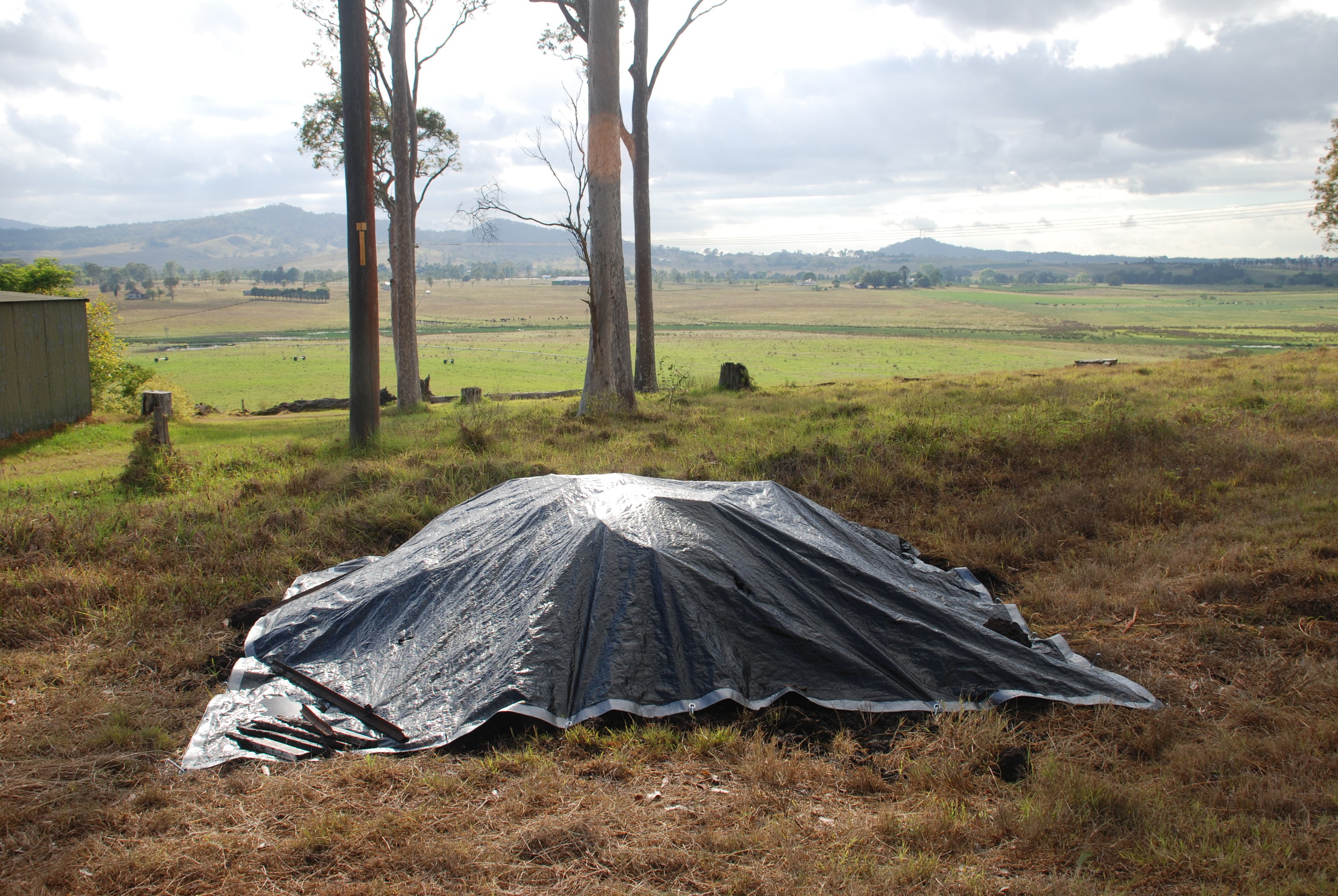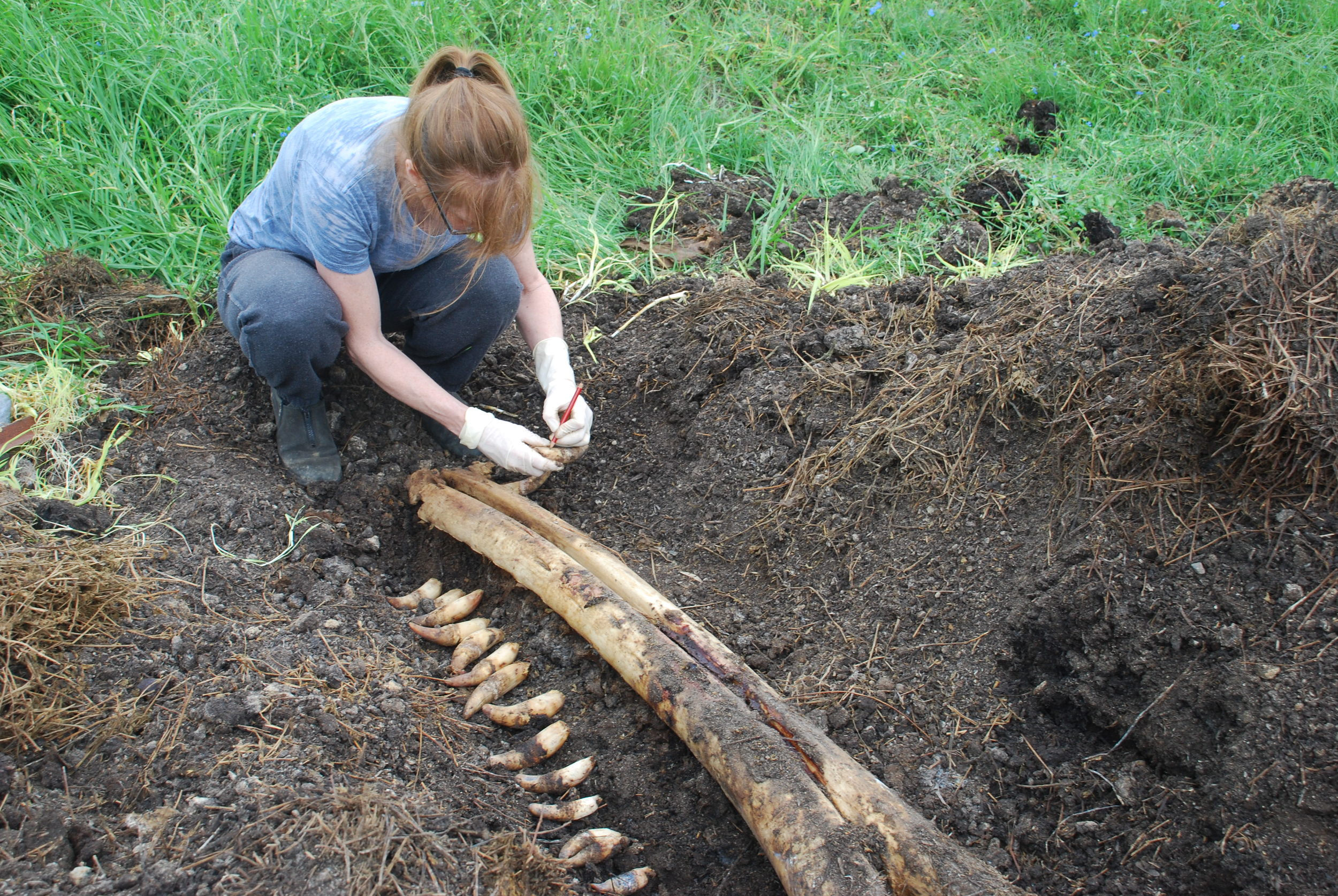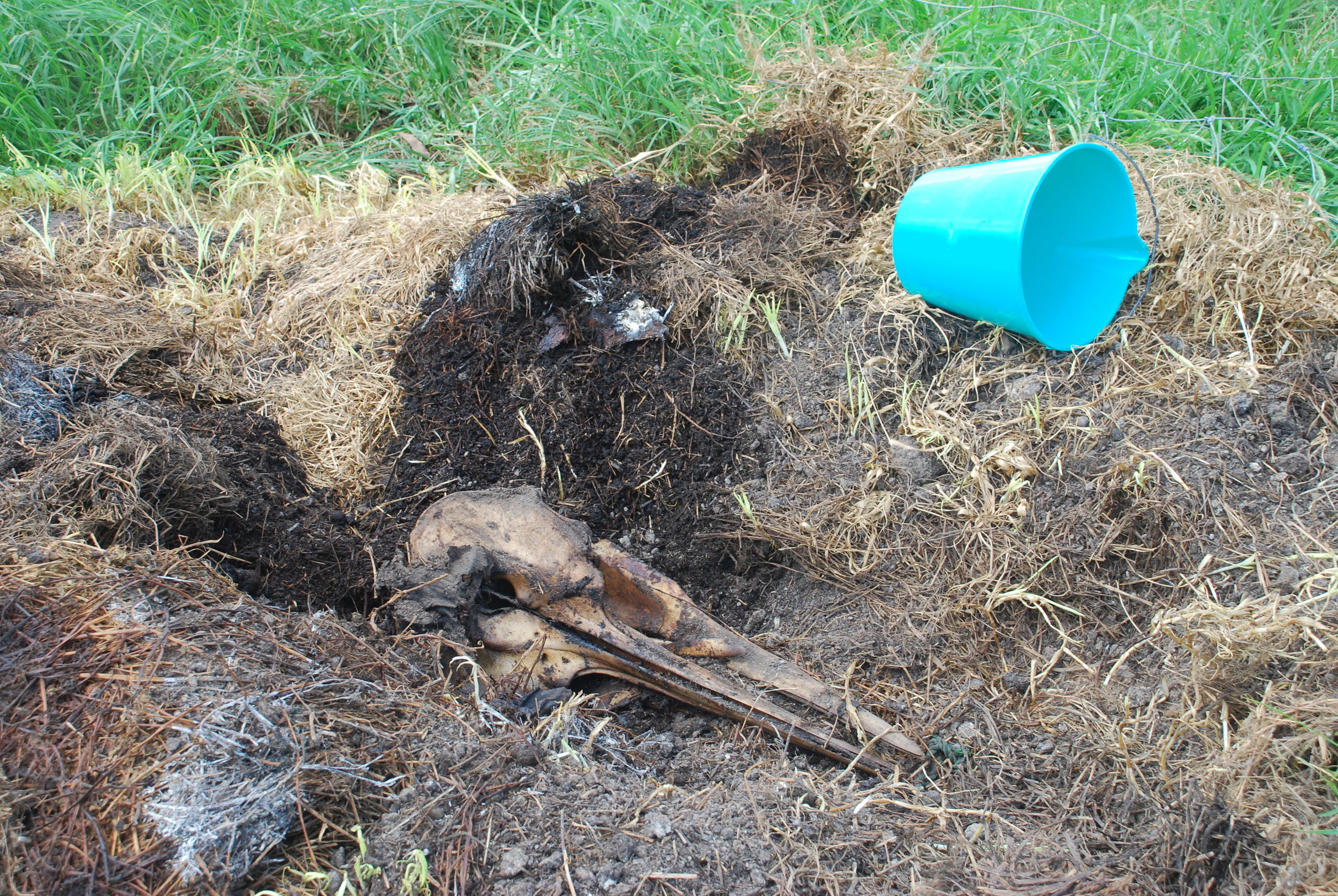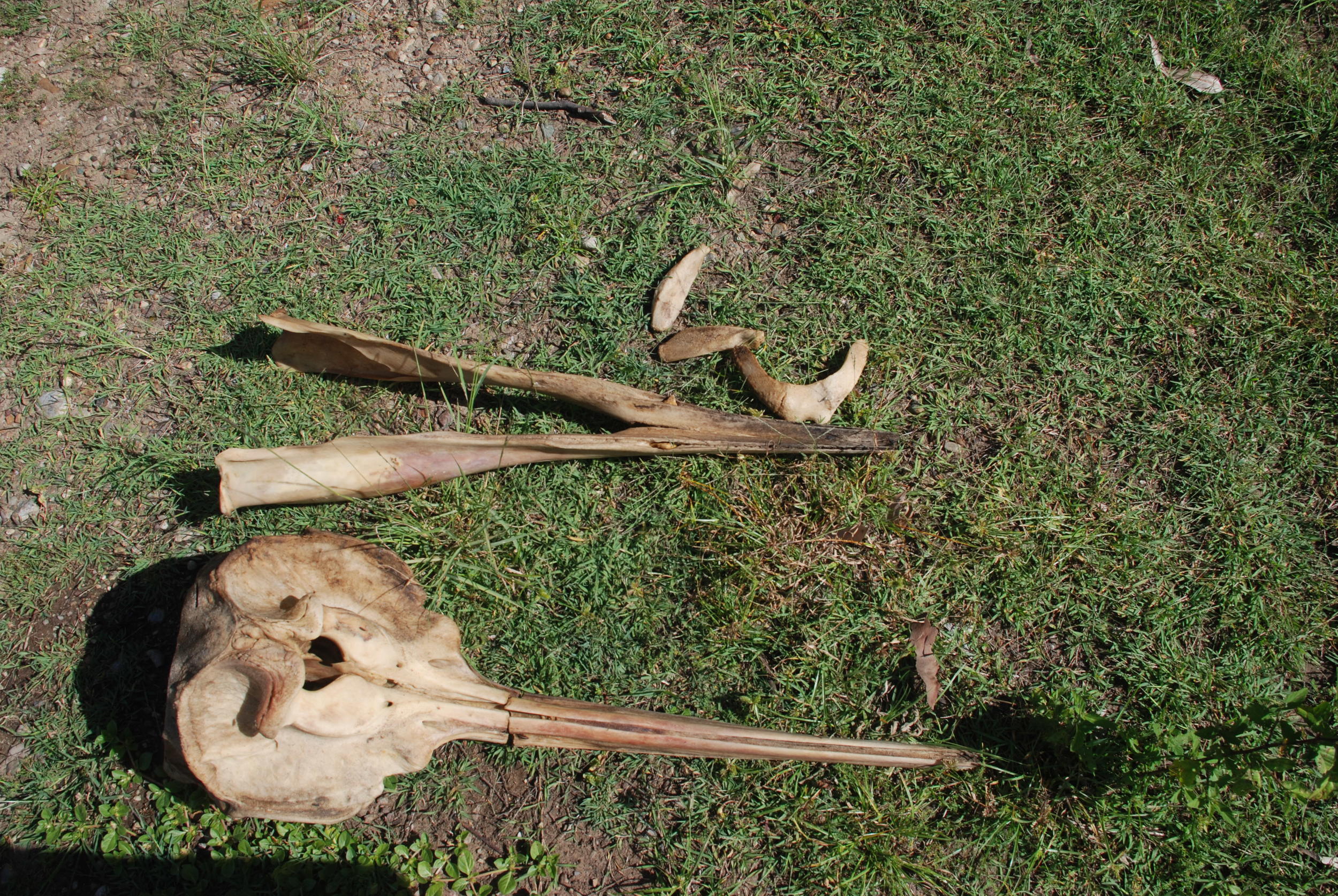From fuelling ecosystems to museum research, whales are the great movers and shakers of the ocean – even in death.
Illustration by Leigh Douglas
In May this year, when the body of a female gray whale was found in Elliott Bay near downtown Seattle, she was given a burial at sea of a different kind. After removing her flippers and entrails, CRC-1524, as she was named, was swaddled in a net and sunk into the waters near Port Townsend.
Researchers and students are now monitoring the natural process of decomposition as scavenger marine life cleans the 14-tonne body of its flesh and cartilage. Ultimately, the skeleton will be collected, reassembled and put on public display at the Port Townsend Science Center. Here, CRC-1524 will live on as a valuable education tool, inspiring wonder in scientists and students alike.
The relationship between humans and whales through history has always been a flux of fear and fascination. In Greek mythology, Andromeda was offered up as sacrifice to the sea monster Cetus, before it was slain by the hero Perseus. This legend forms the etymological root for Cetacea ("huge fish"), the taxonomic group that includes the whales. Hermann Melville’s 1851 novel Moby-Dick, the tale of the hunt for an elusive albino whale, is now immortalised in the idiom ‘white whale’, symbolising the fruitless chase of the impossible.
The historical allure of whales is not just mythical, but also visceral. In the past, when whale hunting was prolific, we dissected whales for parts and product: we drained their oil and blubber to fuel lamps, bent their bones into corsets, and distilled their vomit as perfume.
Melville's 1851 novel Moby-Dick is perhaps the most celebrated depiction of whales in literature. Harper & Brothers/Wikimedia Commons; I.W. Taber/Wikimedia Commons; A. Burnham Shute/Wikimedia Commons (public domain)
Even in modern times, whales continue to captivate and draw us in. In the 1950s, a dead finback whale was placed in a truck and ferried around the UK as an ambitious travelling exhibition, although its stench created a bigger impression than the animal itself. Today, whale watching is a billion dollar industry, as millions flock to be at the sidelines of their annual migration.
The ‘great whales’, which include baleen and sperm whales, are not just important culturally, but also ecologically. Whales have a lot of weight in the carbon recycling process, and their faeces provide nutrient plumes for plankton for hundreds of kilometres. In the deep sea where the sun doesn’t shine, there are very limited food sources available. Deep sea creatures usually rely on ‘marine snow’, titbits of organic matter that gradually drift down from the ocean surface. But once in a while the depths are granted a whale carcass, and the local marine life definitely takes notice.
These 'whale falls' inject an immense amount of food into a food-limited environment, equal to thousands of years of marine snow fall. Like a waterhole on the Serengeti, these falls become host to a rich ecosystem in a seemingly barren wasteland. The complexity of these communities can rival more permanent ecosystems, with over 400 species discovered in and around deep-sea whale remains. Whale sharks and manta rays also attract scavenger communities, but not with the unique diversity seen in whale falls. From body to bone, a single whale can sustain a community for up to 50 years, with the species composition changing over time.
Whale carcasses planted on the seabed, like that of CRC-1524, have helped researchers observe the organic procession of marine life. First to arrive are hagfish, crabs and sleeper sharks that harvest much of the whale’s blubber and flesh. The bones are then picked clean of remaining tissue by snails, bristle worms and shrimp. Bacterial mats start to blanket the bones, attracting colonies of shellfish such as mussels, shipworms and clams. Even the oil-saturated whale bones are sucked dry.
Unique ‘bone devourer’ worm species have been discovered on whale falls. Replete with feathery plumes, these worms embed roots into the bones to digest fats and oils with the help of symbiotic bacteria. Osedax worms excrete an acid that gradually dissolves the whale’s skeleton to access the fats within.
The stages of whale decomposition, in a stylised short film by Sharon Shattuck and Flora Lichtman.
Scientifically, much about the lives of whales is still a mystery. Cetacean research is usually conducted at a distance, by observing and tracking individuals in the wild, or by taking tissue samples from sloughed skin found floating in the water. Often, the only chance we have to get up close and personal with them is in death.
Taking care of a whale's body can be a headache for local authorities, but to researchers it presents a smorgasbord of scientific information. For this reason, when whales don’t survive a beach stranding, the museum is often the first port of call. One important person to notify is Dr Sandy Ingleby, manager of the Australian Museum's mammal collection. "The first question we ask whenever there is a stranding," says Ingleby, "is 'how big is it?'”
After 180 years of collecting, there are over 500 whale and dolphin specimens in the museum's collection. The giant sperm whale skeleton that hangs over the foyer dates back to 1871.
All of the specimens amassed over the years have research potential that extends beyond what the original collectors might have envisioned. Every week, scores of researchers from around the world visit the museum's natural history and cultural collections. From bone to blubber, each part of the whale has a different value to a wide range of scientists. DNA samples can determine whether the whale is from one particular population or is actually an undescribed sub-species. Blubber is collected for toxicology tests to check for build up of heavy metal pollution.
The skeleton of a sperm whale hangs over the foyer at the Australian Museum in Sydney. Moshe Reuveni/Flickr (CC BY-NC-ND 2.0)
Information from museum specimens has drastically shifted our understanding of whale populations. An Omura's whale that washed up on a West Australian beach last year was only the species' second sighting in Australian history; it is so rarely-seen that it was only officially described in 2003 and is listed by the International Union for Conservation of Nature as 'data deficient.'
Even specimens collected decades ago continue to have scientific value. The museum has a historic collection of whale baleen plates collected from the 1960s, which have been used to trace lineage and feeding habits. Baleen, also known as whalebone, is the massive curtain of hard keratin that fringes the inside the mouths of the baleen whales. Similar to a filtration system, the baleen sieves out plankton and krill as the whale feeds, pushing the water out and leaving the animals behind as a food source.
By comparing baleen, says Ingleby, "we can compare populations from the 60s to populations today, and determine whether they are descended from those individuals, or from ones that have come in from elsewhere. You can figure out whether whale populations have altered their diet over the years as conditions change.
"That’s the extraordinary thing with museum collections. When these specimens were first collected, no one could have known what their purpose would be hundreds of years later.”
A humpback whale (Megaptera novaeangliae) showing curtains of baleen as it feeds. Tim Ellis/Flickr (CC BY-NC 2.0)
In recent decades, the advent of molecular techniques has amplified the value of these collections. This is especially true in the case of beaked whales. In one example, DNA samples from a 120-year-old Longman's beaked whale skull helped uncover a case of mistaken identity. It was revealed that some of the museum's whale bones were not those of the southern bottlenose whale, as was previously thought, but rather Longman’s beaked whale, one of the rarest and least known cetaceans.
Just last week, yet another new species of Pacific beaked whale was confirmed using genetic samples from museum specimens. This included a skull that entered the Smithsonian Institution collection in 1948, and tissue samples from a whale stranded on Unalaska Island in 2004.
“Beaked whales are quite rare in the sense that you don’t get many opportunities to study them other than specimens from stranding," says Ingleby. And the Australian Museum will soon add more beaked whales to its collection. In 2011, three stranded individuals were buried in the sands of Lord Howe Island, and the museum is hoping to exhume them early next year.
In fact, the New South Wales coast is dotted with whale graveyards, where whales that have died from stranding are buried. Some years ago, the Australian Museum exhumed the skeleton of a Gray’s beaked whale and a pilot whale from one site along the state's central coast.
There is also one whale graveyard in an unlikely place: in the middle of a field in the Hunter Valley, in country New South Wales. Ingleby is trialling a new way to clean whale skeletons in preparation for storage and display.
All museums have the same problem with cetaceans: the skulls continue to ooze oil even after the flesh is cleaned off. Previously, the only way to degrease them involved toxic chemicals such as trichloroethylene and ammonia. Burying the samples in sand isn’t ideal, since the skeleton disintegrates if it is left too long. In the US, the Smithsonian Museum has trialled blanketing whale specimens in layers of hay, similar to composting, with great success.




“We started this huge composting pile," says Ingleby. "We had a number of dolphin and whale skulls, and even a bear skull, buried there under layers of hay and compost. After two or three months, the skulls were actually clean and not oily at all.”
In winter, the hay insulation generates so much heat that you can lift up the hay and feel the warmth radiating off, which doesn't go unnoticed by other species. “Once I found a red bellied black snake," says Ingleby. "It must have found the hay nice and warm!”
Swathed in these layers of hay, the whale carcasses seem to attract their own invertebrate fauna. Ingleby noticed that they were covered in giant beetles, and other species used by forensic scientists to identify the final stages of decomposition.
In death, it seems, whales continue to exert a silent influence on ecosystems ‒ both under the sea and above ground. Their legacy is immeasurable and their existence invaluable. Even decades later, a whale's flesh and bones still have many tales to tell.
Edited by Andrew Katsis and Ellie Michaelides

































































